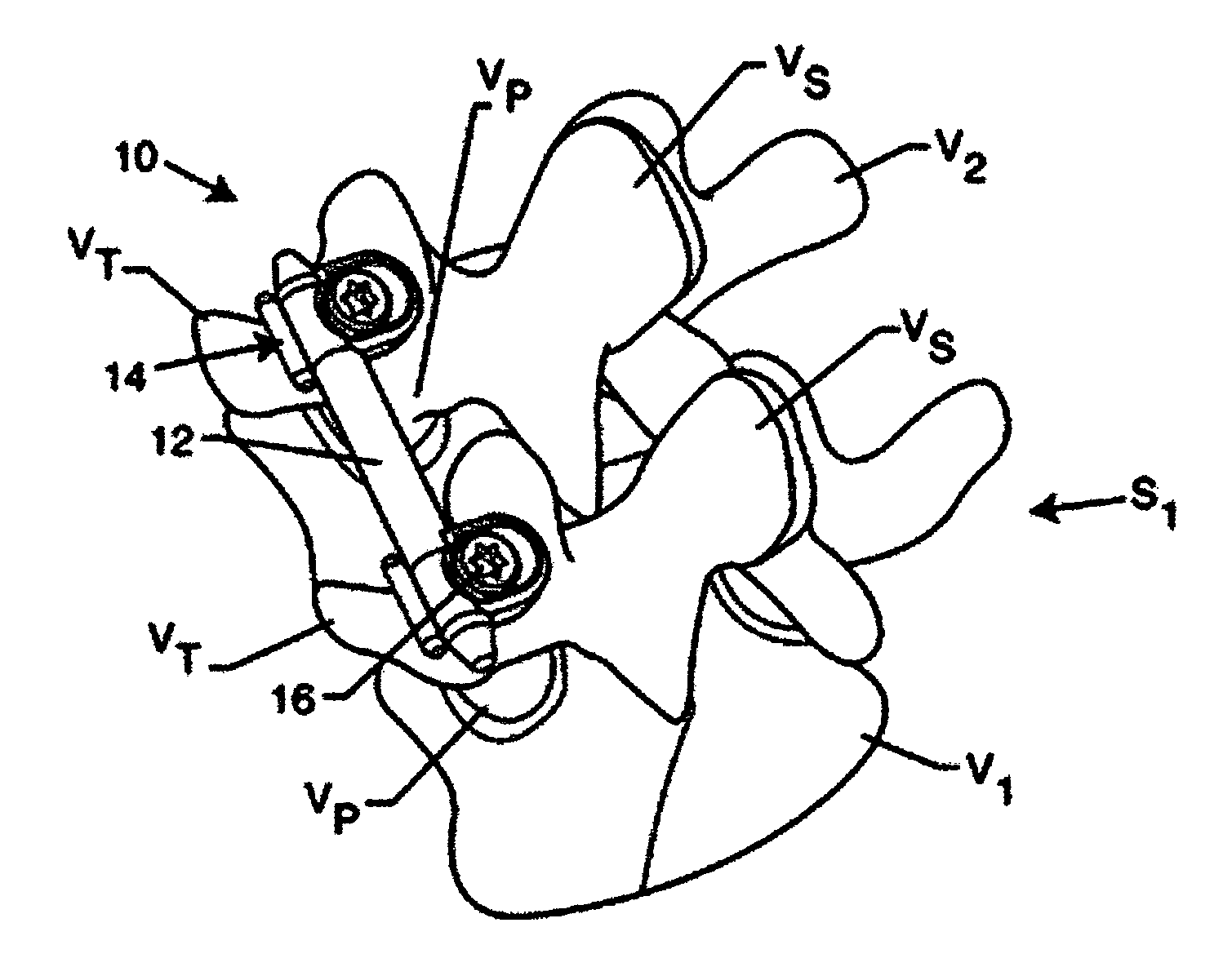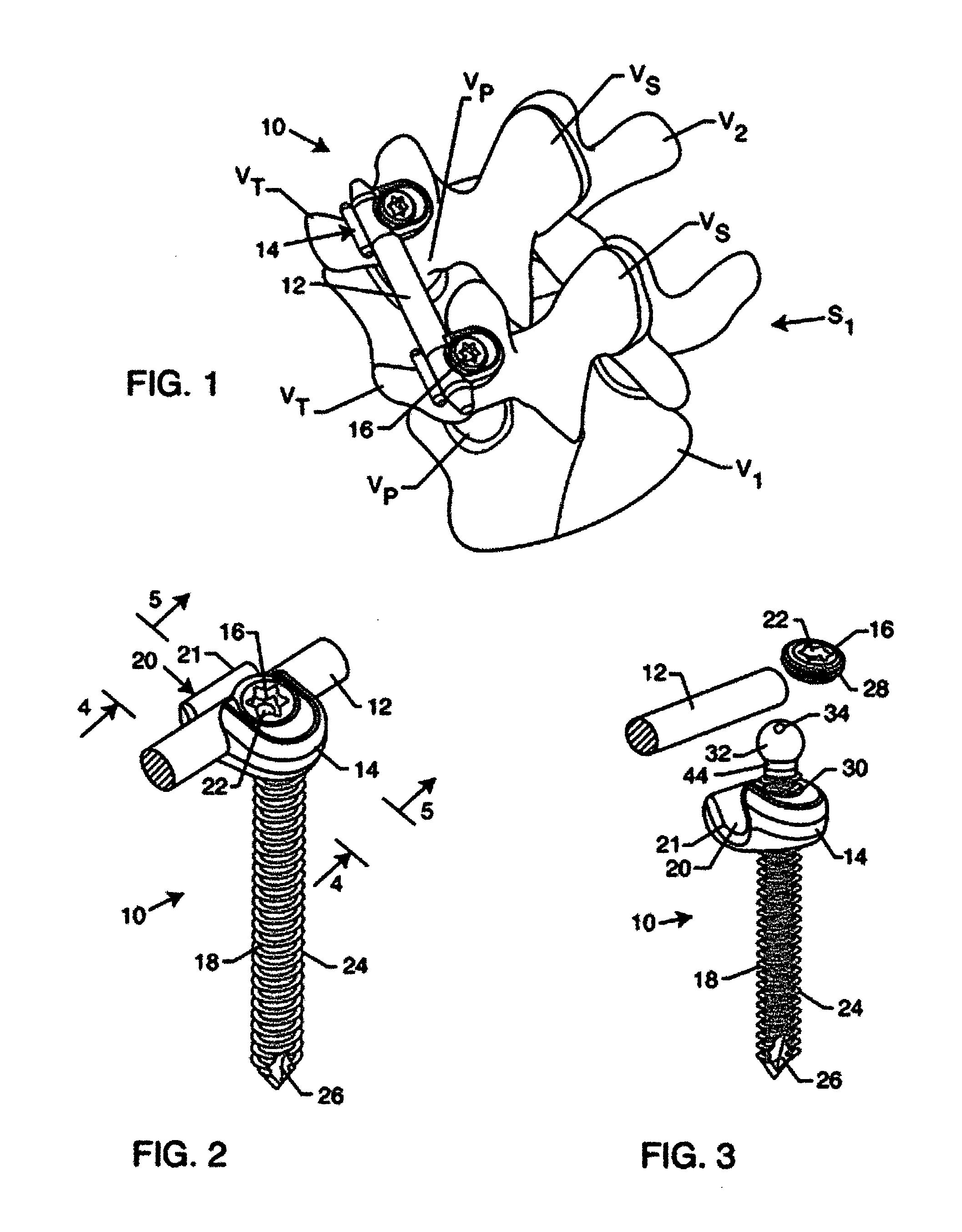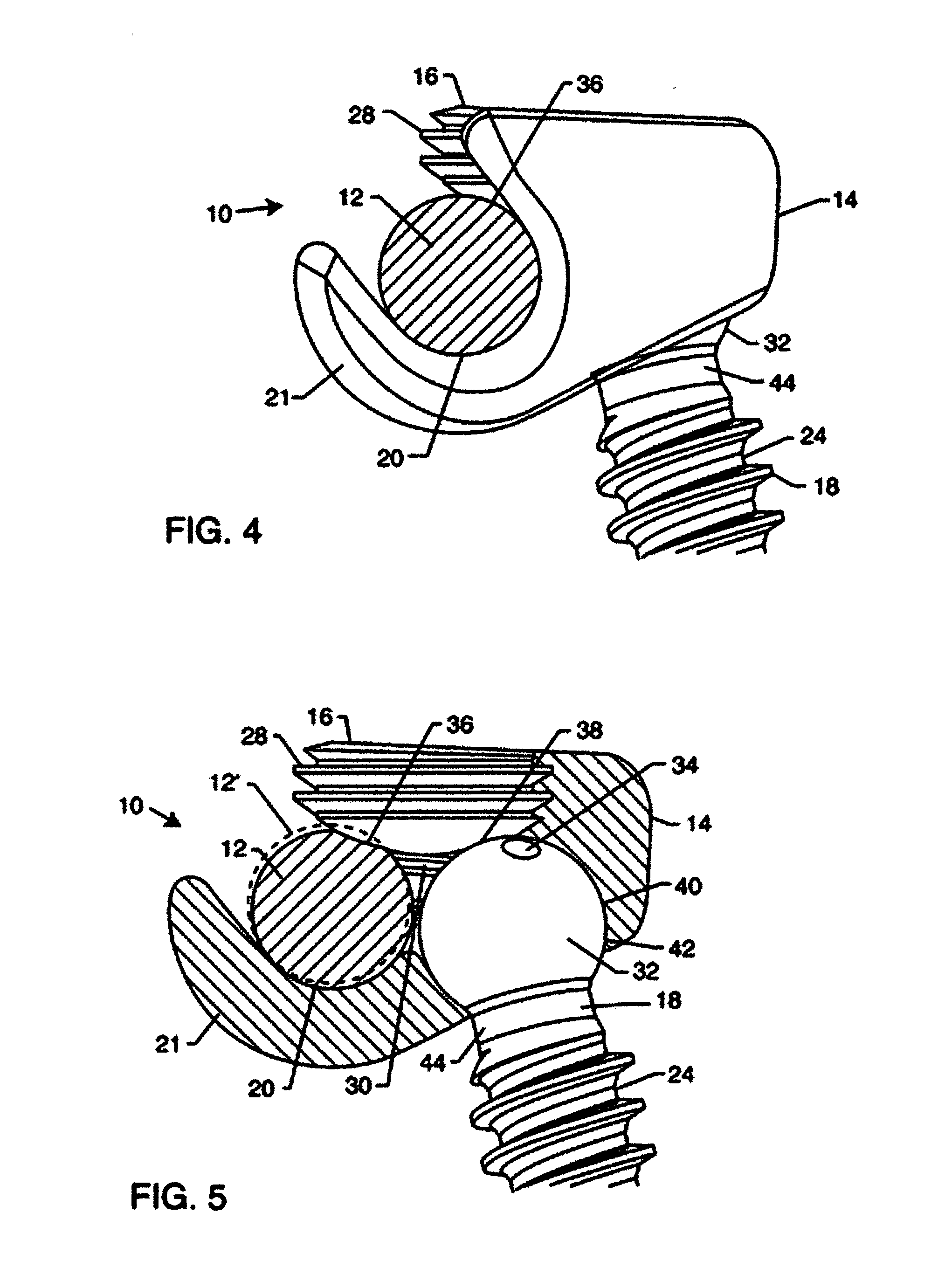Pedicle screw system with offset stabilizer rod
a stabilizer rod and pedicle screw technology, which is applied in the field of pedicle screw system with laterally offset stabilizer rod, can solve the problems of stacked components, extreme and debilitating pain of patients suffering from such conditions, and reducing nerve function, so as to achieve fast and easy use of the fixing system and method
- Summary
- Abstract
- Description
- Claims
- Application Information
AI Technical Summary
Benefits of technology
Problems solved by technology
Method used
Image
Examples
Embodiment Construction
[0037] As shown in the exemplary drawings, an improved spinal fixation device referred to generally in FIGS. 1-5 by the reference numeral 10 is provided for attachment to at least a pair of adjacent patient bones such as spinal vertebrae S1 (FIG. 1) to maintain the skeletal structures in spaced relation while promoting bone ingrowth and fusion. In general, the improved fixation device 10 comprises a bio-compatible stabilization member such as an elongated stabilizer rod 12 providing a strong mechanical load bearing structure, with said rod 12 connecting with a plurality of bone screw units each including a bone screw 18 secured or anchored to the vertebrae S1.
[0038] Each bone screw 18 comprises a threaded shank portion 24 for engaging and securely anchoring to patient bone. In the preferred embodiment, each bone screw 18 is manufactured from a high strength bio-compatible material, allowing for load carrying capabilities. Proximal to the threaded portion 24 is a screw head or head ...
PUM
 Login to View More
Login to View More Abstract
Description
Claims
Application Information
 Login to View More
Login to View More - R&D
- Intellectual Property
- Life Sciences
- Materials
- Tech Scout
- Unparalleled Data Quality
- Higher Quality Content
- 60% Fewer Hallucinations
Browse by: Latest US Patents, China's latest patents, Technical Efficacy Thesaurus, Application Domain, Technology Topic, Popular Technical Reports.
© 2025 PatSnap. All rights reserved.Legal|Privacy policy|Modern Slavery Act Transparency Statement|Sitemap|About US| Contact US: help@patsnap.com



